It’s where the fluorescent aqua of the Indian Ocean meets the reddest west; where the sun sets over a real beach wider than any Californian semi-cement counterpart; a locale hidden in the summer for a million years. Broome, frequently exceeding its average mid-summer temperature of 30°C, is situated in a place that could certainly contend for a ‘world’s end’ setting, in the best kind of way.
BROOME’S PERMANENT POPULATION SITS AT AROUND 14,000, BUT DURING THE TOURIST SEASON THE POPULATION RISES TO BE ABOUT 45,000.
For a tiny town, there’s a lot to admire, and the variety of adventures available within a few hundred kilometres is exciting. Broome, rested on a peninsular with the wild ocean to the west, Roebuck Bay to the south, and the Dampier Creek system directly to the east, is an especially wonderful place for retirees to holiday. It’s warm, easy-going, and to ice the cake, many of the area’s most popular activities pair well with a glass of wine. To make planning a trip to this incredible destination a breeze, we’ve divided up the day. Be thrilled by day, relaxed by night.
By morning…
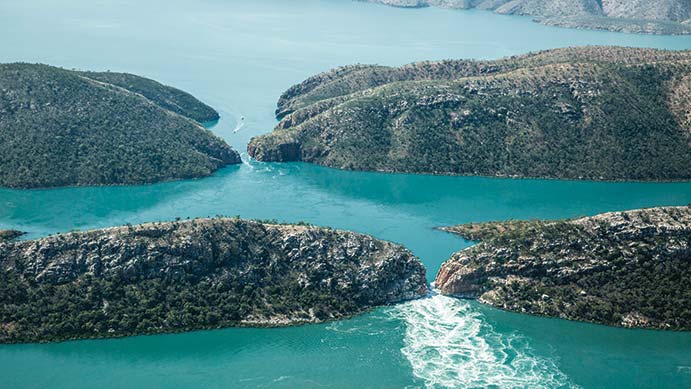
See the Horizontal Falls
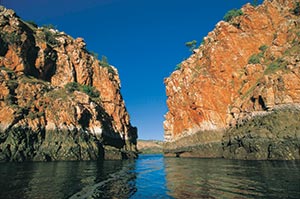
Situated about 255 kilometres north-east of Broome are the Horizontal Waterfalls, nicknamed ‘the Horries’. An incredible phenomenon that David Attenborough labelled as “one of the greatest natural wonders of the world”, the falls consist of a rapid-moving tidal flow between two closely aligned gorges, which form part of the McLarty Range in Talbot Bay.
Given the tides in the Kimberley can reach 10 metres in height, a peak tide results in a considerable difference in the sea level on either side of each of the gorges – the falls being the visually impressive outcome.
There are a host of companies that operate tours to the falls from Broome. Some companies offer rides to the falls in 4×4 vehicles that cruise along the Dampier Peninsular, a partly unsealed road that makes for a bumpy but adventurous journey. Once there, you can board a seaplane to experience the falls, Willie Creek, the Buccaneer Archipelago, Cape Leveque and all that rests en route from above.
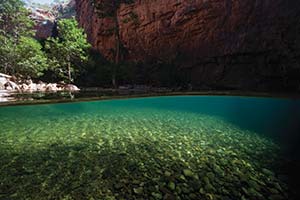
For an experience at ground level – well, sea level – get strapped into a powerful jet boat that will speed through the bay and over the falls. How many places in the world can you speed over a waterfall in a boat? Experiencing the Horries and surrounding geographical wonders will take an entire day out of your calendar – be prepared for an early start.
… or explore the Kimberly Region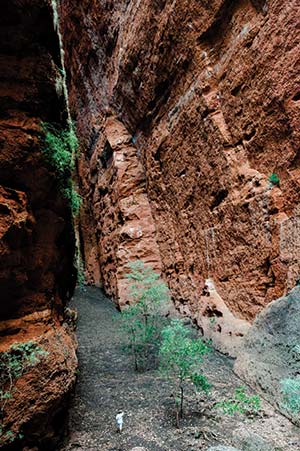
Sparsely populated and approximately 423,517 square kilometres in size, the Kimberley Region of far north Western Australia is recognised globally for its ancient ruddy gorges, flat shrubby desert and secluded coastal sections. Since Broome is included in the region, it’s hard to pass up travelling a few hours to see these geographical attractions. A few sites Tourism Australia recommends marking on the map include the Bungle Bungle Range, Lake Argyle, and the tides at the Buccaneer Archipelago.
The Bungle Bungle Range, rising to 578 metres above sea level, is situated within the World Heritage-listed Purnululu National Park, located just south of Lake Argyle. The modes of exploration here are wonderfully varied – you can opt to explore with a bird’s eye view via a scenic flyover, or meander on foot or by car at your own pace. It’s possible to camp here, too.
Lake Argyle, 140km north of the park and right on the border of the Northern Territory, is a vast freshwater lake considered the jewel of the Kimberley, and the ‘last stop’ when exploring northern WA. The lake is Australia’s second largest man-made reservoir, spanning 1000 square kilometres – that’s more than 21 times the size of Sydney Harbour. At maximum capacity, the lake could fill Sydney Harbour up to 70 times.
While its construction just over 40 years ago caused dramatic changes to the local environment, an entirely new ecosystem has since developed. The lake is home to an array of native fish, more than 150,000 birds, and the freshwater crocodile population is estimated at around 25,000. Despite the fearsome reptiles, Lake Argyle’s water is warm, and very popular for swimming and paddling, even hosting an annual swimming event each May.
After lunch…
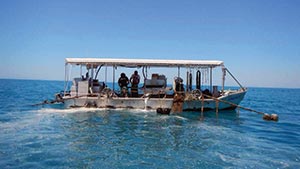
Visit Gantheaume Point
There’s a certain feeling that comes with treading the same path a creature walked millions of years before you. You can have this experience by visiting Gantheaume Point, easily accessed at the southern tip of Broome’s popular Cable Beach.
While the real dinosaur footprints are preserved in the reef rock, which can be seen at very low tide at the bottom of the cliff, there is a well-worn track that leads to a cast of a dinosaur’s prints.
Aside from its ties to prehistoric times, the rugged Gantheaume Point makes for pretty spectacular photo opportunities. Jutting out into the Indian Ocean’s azure blue, the terrain here is a saturated orange that complements the water in a way you won’t find anywhere else on the planet. Make the most of the scenery and stop by Anastasia’s Pool on the point’s north side. The rock pool was built by the former lighthouse keeper, whose wife suffered from crippling arthritis. While it was partially destroyed by a storm in early 2014, it still fills with fresh ocean water when the tide is high. If the weather’s warm enough, which it is almost guaranteed to be, there’s no reason not to hop in and enjoy a salty bath.
… or brush up on your pearl knowledge
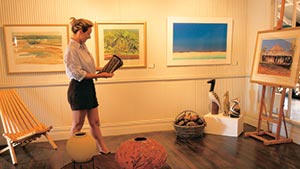
Broome’s history of pearling extends back over 120 years, and is still thriving today, supplying the sea-born jewels to retailers the world over. A brief walk around the town will have you gaining information about the area’s pearling history and the modern industry in no time. Making for one special stop around town is the Japanese cemetery, dedicated to the Japanese sailors and divers, whom from the late 1800s through until the mid-1930s, lost their lives working in the Australian pearl industry. Before pearls were popular, it was the oyster shell that drew demand – Broome at one point supplied 75 per cent of the world’s nacre, known to most as mother-of-pearl. There are a number of stores in town where you can take home a sparkling souvenir – all that’s needed is a short stroll through Broome’s main street.
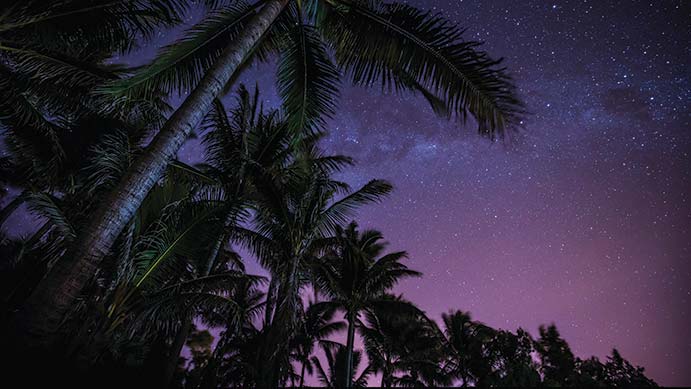
By evening…
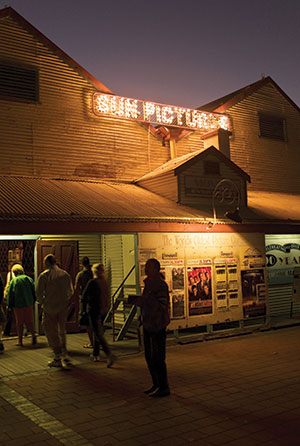 Catch a flick at the Sun Pictures Cinema
Catch a flick at the Sun Pictures Cinema
If the day’s events haven’t worn you down too much, schedule your dinner around seeing a film at the Sun Pictures Cinema. As the world’s oldest outdoor garden cinema still in operation, this is a highly unique experience. While most outdoor cinemas still operating may only screen one or two films per week, Sun Pictures screens multiple films each night – just like your local, but so much more special.
Before pearls were popular, it was the oyster shell that drew demand – Broome at one point supplied 75 per cent of the world’s nacre, known to most as mother-of-pearl.
… or stargaze
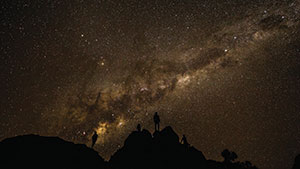
In a place with so little urban development and a sky naturally clear of clouds in the dry season, stargazing opportunities are at their peak, and the activity makes for an evening well spent in Broome. Really, admiring the night sky from anywhere in the Kimberley is time spent wisely and memorably – too often we forget to look up, appreciate and remember where we sit in the grand scheme of things.
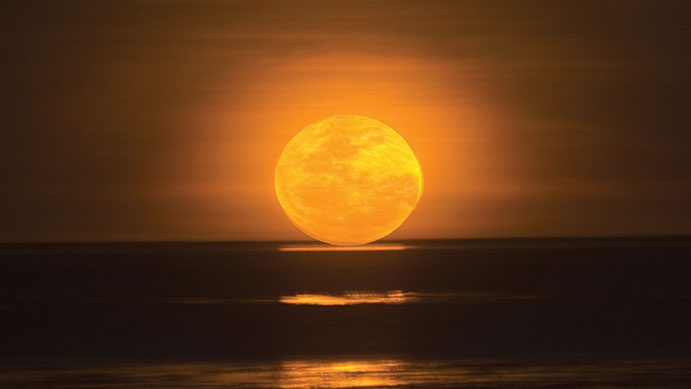
… or witness the Staircase to the Moon
Films, television and books have long made the notion of watching the sun set over the ocean a romantic one. In Broome, this is something the locals can do every day. One experience that doesn’t come around every day in Broome, however, is witnessing the ‘Staircase to the Moon’.
Occurring only for a few days each month, the Staircase to the Moon is caused by the rising of the full moon reflecting off exposed mudflats at extremely low tide. A stunning optical illusion, the sight is best relished at the end of a long day, with wine in hand, outside The Mangrove Hotel Resort overlooking Roebuck Bay.
STAIRCASE TO THE MOON 2016 DATES
24 March 6.33pm
25 March 7.11pm
26 March 7.50pm
22 April 5.50pm
23 April 6.30pm
24 April 7.12pm
22 May 5.54pm
23 May 6.40pm
24 May 7.29pm
21 June 6.16pm
22 June 7.09pm
23 June 8.04pm
20 July 5.56pm
21 July 6.53pm
22 July 7.50pm
19 August 6.37pm
20 August 7.36pm
21 August 8.35pm
17 September 6.21pm
18 September 7.21pm
19 September 8.23pm
16 October 6.04pm
17 October 7.07pm
18 October 8.11pm
You can find out more about these destinations and how to travel to them at www.westernaustralia.com, and www.tourism.wa.gov.au





















Add Comment